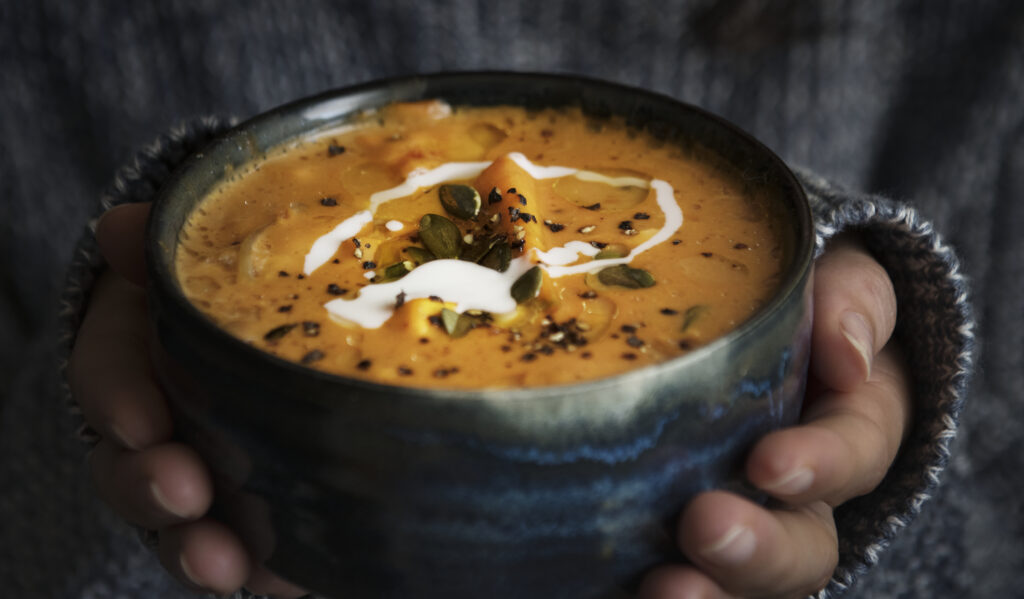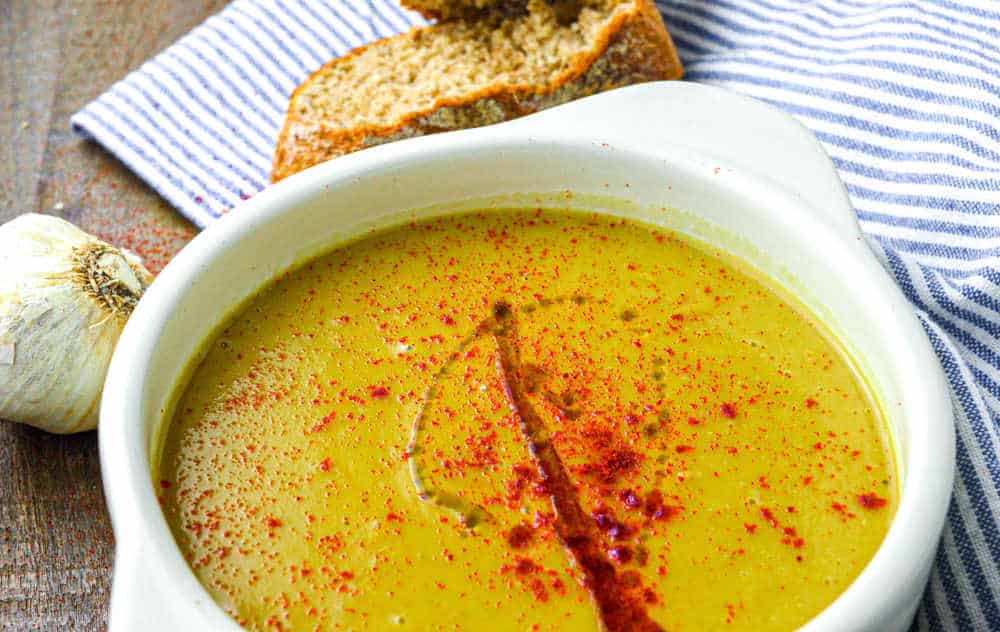Have you ever wondered how a single dish can capture the essence of an entire culinary culture? Moroccan soup recipes are more than just meals. They’re a journey through tradition, flavor, and seasonal adaptation.
Moroccan cuisine offers an incredible variety of soup recipes. These soups dance across different seasons, reflecting the rich cultural heritage and diverse landscapes of North Africa. From warming winter broths to light summer refreshments, these soups represent a culinary art form.
Each spoonful tells a story of generations. It blends aromatic spices, fresh herbs, and local ingredients. Moroccan soup recipes are not just about nutrition. They’re about connection, comfort, and the vibrant spirit of a remarkable culinary tradition.
Key Takeaways
- Moroccan soups represent a diverse culinary tradition
- Seasonal variations showcase incredible ingredient adaptability
- Spices and herbs are crucial to authentic flavor profiles
- Soup recipes reflect cultural and regional diversity
- Each recipe tells a unique story of Moroccan cuisine
Introduction to Traditional Moroccan Soup Culture
Moroccan cuisine is full of life, with soups at its heart. These soups are more than food; they show hospitality and bring people together.

Moroccan soups carry stories of history and family love. They mix flavors from Berber, Arab, and Mediterranean cultures. This makes Moroccan food traditions rich and varied.
Historical Roots in Culinary Traditions
Moroccan soup culture grew over many generations. Families made meals from simple ingredients, helping communities through hard times. Harira and other soups became common, uniting people from all walks of life.
Soups in Daily Moroccan Life
Soups in Morocco are more than food; they’re a way to connect. They’re served at special times, like Ramadan and harvest festivals. Each soup is a mix of spices, vegetables, and proteins, showing off Moroccan cooking skills.
Regional Soup Variations
Morocco’s different areas have their own soup styles. Coastal places have seafood soups, while mountain areas have lamb and lentil soups. From Marrakech’s markets to the Atlas Mountains, each place adds its own flavor to Moroccan soups.
In Morocco, a soup is not just a dish – it’s a story told through taste and tradition.
Essential Spices and Herbs for Moroccan Soups

Moroccan cuisine is a vibrant mix of flavors. Spices and herbs are key to its unique taste. Moroccan soup seasonings make simple ingredients into amazing dishes.
Cumin is a main spice in Moroccan cooking, adding a warm, earthy flavor. Coriander seeds add a citrusy touch. Saffron, with its golden-red color, brings a luxurious aroma to soups.
Ras el hanout is a special spice blend in Moroccan cooking. It can have up to 30 spices, like cardamom and cinnamon. Both home cooks and chefs love it for adding depth to Moroccan dishes.
The art of blending spices is a time-honored tradition that transforms simple ingredients into culinary masterpieces.
Fresh herbs like mint, parsley, and cilantro add freshness to Moroccan soups. They’re not just for decoration. They balance the strong spice flavors in Moroccan dishes.
If you want real flavors, buy high-quality whole spices. Grinding them just before cooking brings out the best taste. This brings Moroccan cooking traditions to your kitchen.
Classic Harira Soup: Morocco’s Beloved Recipe
Harira soup is a treasure in Moroccan cuisine. It’s deeply rooted in cultural traditions and family gatherings. This hearty soup is more than a meal; it’s a symbol of hospitality and comfort that spans generations.
Traditional Ramadan Preparation
During Ramadan, harira soup is key for breaking the daily fast. Families come together around steaming bowls of this rich soup. It’s a time to share and bond, with each family having its own special recipe.
“Harira is not just a soup, it’s a celebration of Moroccan culinary heritage.” – Moroccan Food Expert
Key Ingredients and Variations
A classic harira soup has lentils, chickpeas, tomatoes, and spices. Different regions have their own twist, adding lamb or beef, or using fresh vegetables and herbs.
Serving Suggestions and Accompaniments
Harira soup is best served hot with fresh bread or dates. Try it with khobz (Moroccan bread) or chebakia (sesame cookies) for a true Moroccan experience. It’s great as a starter or a main dish, fitting into any season.
Hearty Moroccan Lentil Soup for Winter

Winter is the time for warm, comforting meals. Moroccan lentil soup is a great choice for cold days. It’s full of rich flavors and nutrients in one bowl.
In Moroccan cuisine, lentil soup is more than food. It’s a tradition that turns simple ingredients into a masterpiece. Red or green lentils are the base, with spices like cumin and coriander adding warmth.
Making this soup is easy but rewarding. Onions, garlic, tomatoes, and lentils are the main ingredients. Professional chefs say using fresh spices makes it even better. Each spoonful is packed with nutrients to fight off the cold.
A bowl of Moroccan lentil soup is like a warm embrace during the coldest months.
You can add veggies like carrots or spinach to the soup. Adjust the thickness by adding more broth or cooking the lentils longer. This soup is great because you can make it your own.
Enjoy the soup with fresh bread or herbs for the full experience. It’s not just filling; it’s also nutritious, with protein and minerals.
Moroccan Soup Recipes for Every Season
Moroccan cuisine takes you on a journey through seasonal soups. These soups capture the essence of each time of year. They show how traditional cooking adapts to local ingredients and climate changes.

Seasonal soups reflect the local harvest and culinary traditions. Each season brings unique flavors and ingredients. These transform simple recipes into extraordinary culinary experiences.
Spring Fresh Herb Soups
Spring soups are filled with vibrant green herbs like mint, parsley, and cilantro. Bakoula, a traditional Moroccan spring soup, uses fresh greens in light broths. This awakens the palate after winter’s heavy meals.
“In Morocco, spring soups are a celebration of renewal and fresh harvests.” – Moroccan Culinary Traditions
Summer Light Broths
Summer soups are all about cooling and refreshing. Chilled vegetable broths with tomatoes, cucumber, and light spices offer relief from the heat. They keep traditional flavor profiles intact.
Autumn Vegetable Medleys
Autumn brings hearty vegetable soups. Root vegetables like carrots, pumpkins, and turnips make rich, warming dishes. These showcase Morocco’s agricultural diversity.
Winter Warming Recipes
Winter soups in Morocco become deeply satisfying meals. Robust lentil and lamb soups with warming spices like cumin and paprika offer comfort. They embody the true spirit of Moroccan comfort food.
Traditional Chickpea and Lamb Soup Techniques
Moroccan chickpea and lamb soups are rooted in generations of home cooking. These hearty dishes show the cooking techniques passed down through family kitchens in North Africa. Preparing these soups needs patience, skill, and knowing traditional flavor combinations.
Lamb soup starts with choosing high-quality meat. Chefs say to use bone-in lamb cuts for the best flavor. Slow-cooking is key to making the meat tender and the broth rich and complex.
Chickpea soup needs careful attention to ingredient prep. Dried chickpeas need soaking overnight and gentle simmering for the right texture. Traditional cooks often use clay pots to add depth and authenticity, linking modern kitchens to ancient cooking ways.
The secret to exceptional Moroccan soup lies not just in ingredients, but in the method of cooking.
Spice blending is crucial in these soup recipes. Spices like cumin, coriander, and paprika turn simple ingredients into amazing dishes. Professional chefs suggest toasting whole spices before grinding to bring out their full aroma in lamb and chickpea soups.
Mastering these cooking techniques takes practice and respect for traditional methods. Each region in Morocco adds its own twist to these beloved soups. This creates a rich tapestry of culinary diversity that inspires both home cooks and professional chefs.
Vegetarian Moroccan Soup Variations
Moroccan soup recipes for every season are perfect for vegetarian cooking. They turn traditional recipes into vibrant, nutritious dishes. These dishes celebrate Morocco’s rich culinary heritage.
Creating vegetarian versions of classic Moroccan soups needs creativity. Ingredients like lentils, chickpeas, and beans offer protein without meat. Moroccan spice blends like ras el hanout add depth to these dishes.
Plant-Based Protein Options
Protein-rich ingredients make vegetable soups satisfying. Tofu, tempeh, and seitan take on Moroccan spices well. Quinoa and split peas add nutrition and flavor.
Seasonal Vegetable Combinations
Each season brings its own vegetable soup delights. Spring has green veggies like artichokes and peas. Summer offers zucchini and eggplant. Autumn brings root veggies, and winter has squash and kale.
Moroccan soups for every season use local, fresh produce. They adapt beautifully to the changing seasons.
Vegetarian Moroccan soups prove that plant-based cooking can be both traditional and innovative.
Authentic Cooking Methods and Equipment
Learning to cook Moroccan dishes means mastering traditional techniques. These methods turn simple ingredients into rich, flavorful soups. The key is using the right equipment and following old recipes passed down through generations.
Moroccan cooks use special tools like the tagine. This clay pot with a conical lid is perfect for slow cooking. It helps create deep, complex flavors found in authentic Moroccan dishes. Today, Dutch ovens or heavy-bottomed pots can also help achieve these flavors.
When making Moroccan soups, cooks layer spices and aromatics carefully. They start by toasting whole spices to release their oils. This step adds a strong flavor base. Then, slow simmering blends the ingredients, creating a unique taste that sets Moroccan soups apart.
“The magic of Moroccan cooking is not just in the ingredients, but in the patience and technique used to transform them.” – Traditional Moroccan Chef
For authentic soup making, you’ll need copper pots, wooden spoons, and tools for grinding spices. While old methods are loved, modern appliances can also help keep the true taste of Moroccan cuisine alive.
Health Benefits of Moroccan Soup Ingredients
Moroccan cuisine is more than just tasty. It’s packed with spices and herbs that boost your health.
Moroccan soups are full of nutrients. They offer healing properties that nourish your body in a special way.
Nutritional Powerhouse Ingredients
Lentils and chickpeas are key in Moroccan soups. They’re loaded with protein, fiber, and minerals. These help keep your blood sugar stable, aid digestion, and give you energy all day.
Therapeutic Properties of Spices
The spices in Moroccan dishes do more than add flavor. Turmeric fights inflammation. Cumin helps with digestion, and ginger boosts your immune system and fights inflammation too.
Moroccan soups are a natural medicine cabinet, combining taste and healing in every bowl.
Adding these Moroccan soup ingredients to your meals can lead to better health and wellness. It’s a tasty way to improve your well-being.
Modern Interpretations of Classic Recipes
Today’s chefs are mixing old flavors with new cooking ways. They make classic Moroccan soups fresh and fun for today’s tastes. This makes Moroccan soup recipes for every season more appealing.
Chefs are trying new mix-ins that keep the Moroccan taste true. They add things like quinoa, kale, and plant-based proteins to old recipes. Molecular gastronomy techniques even make harira and lentil soups fancy.
Both pros and home cooks are making soups lighter and healthier. They offer vegan, gluten-free, and low-carb versions. This breaks the old rules of making Moroccan soup.
Modern cooking techniques are transforming traditional Moroccan soups from simple family meals into gourmet dining experiences.
Restaurant chefs show off these new soups as art. They use fancy plating and garnishes. This creates a world that celebrates Morocco’s food history but also meets today’s tastes and trends.
Storage Tips and Meal Prep Strategies
Learning to cook Moroccan soups for every season means knowing how to store and prepare them. Keeping the flavors and nutrients of dishes like harira and lentil soup is key. By understanding storage tips, you can enjoy these soups longer.
Freezing Moroccan soups needs careful planning. Soups with legumes and veggies freeze well for up to three months in airtight containers. Divide them into single servings for easy meal planning. Glass or BPA-free plastic containers are best to keep the soup’s taste and prevent freezer burn.
Freezing Methods
When freezing, leave an inch of space at the top of each container. This allows for expansion. Label containers with the date and type of soup. Don’t freeze soups with dairy or cream, as they can change texture when thawed.
Reheating Guidelines
Reheating should be done gently to keep the soup’s flavor. Thaw soups in the fridge overnight, then reheat slowly on the stovetop. Use medium-low heat and stir often to avoid scorching. Adding a bit of water or broth helps restore the soup’s original consistency.



